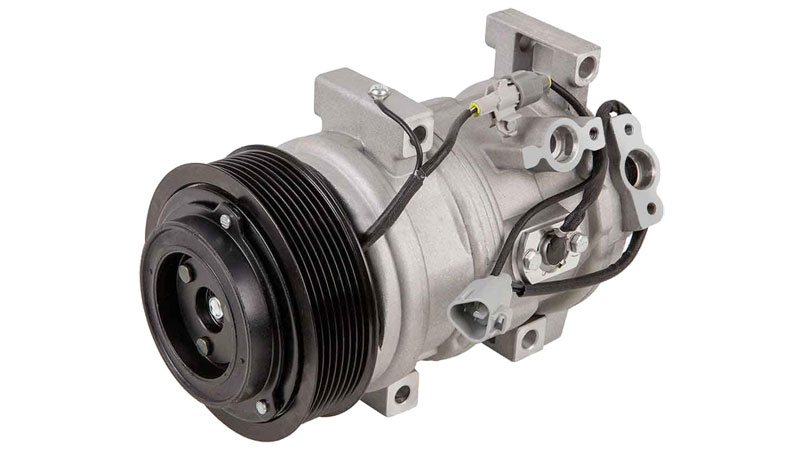Air conditioning is something that many people take for granted until it stops working. This can be annoying if during a hot day, you lean down to turn on your air conditioner and all that comes out is hot air. More importantly, a faulty compressor can be dangerous. If your compressor bearing fails, your motor may be locked due to a stuck compressor. If you are traveling at high speed and the car comes to a halt, it may not have power steering or the brake booster is working. There are a few reasons why your AC system may stop working and the central part is the AC compressor. Here are some ways to diagnose a car AC compressor failure.
Step 1:
If the air temperature does not cool when the AC system is activated, it is very likely that there is an AC compressor failure. If the air conditioning still works, check if the temperature fluctuates while the air conditioning system is running.
Step 2:
Find your A/C compressor and inspect it for rust, physical damage, oil leaks, or paint damage. These are all signs of a bad AC compressor in the car. With a lack of oil, the compressor will not work efficiently and will wear out prematurely. The increased friction will also lead to erratic temperatures when the AC system is activated.
Step 3:
Check your straps to make sure there is proper tension and that the straps are not damaged. A cracked or split belt can further damage your AC compressor. If they are in poor condition, they should be replaced with a new compressor.
Step 4:
Inspect the clutch located at the front of the AC compressor and make sure the clutch spins freely. There should be minimum resistance when rotating the clutch hub. We recommend that if one goes wrong, both should be replaced.
Step 5:
With the engine running, set the air conditioner to its coldest setting and the fan to the highest setting. Open the hood and listen for the AC compressor and clutch to activate. Failure of a car’s AC compressor will not start and will often cause skipping and squeaking due to belt friction.
Step 6:
Look for any refrigerant leaks. The AC system is off and there should be no leaks and the refrigerant should be low. A low coolant level means you have a leak in your system. There are also other tests that use a special dye that is visible under UV light.
If you have completed these steps and you think your car’s AC compressor is failing, it is best to replace it. We recommend that when replacing your AC compressor and clutch, you also replace the accumulator, expansion device and O-ring. By replacing all of these parts, you can be sure that you won’t have to work more than once. Enter your vehicle information on the site to find air conditioning parts for your vehicle, or contact us for specialized help finding the right item from a variety of options. We carry brand new compressors from renowned brands such as Denso, Delphi, Sanden, Diesel Kiki and more, as well as guaranteed close-fitting quality aftermarket replacements backed by the same warranty, customer service and expertise.

